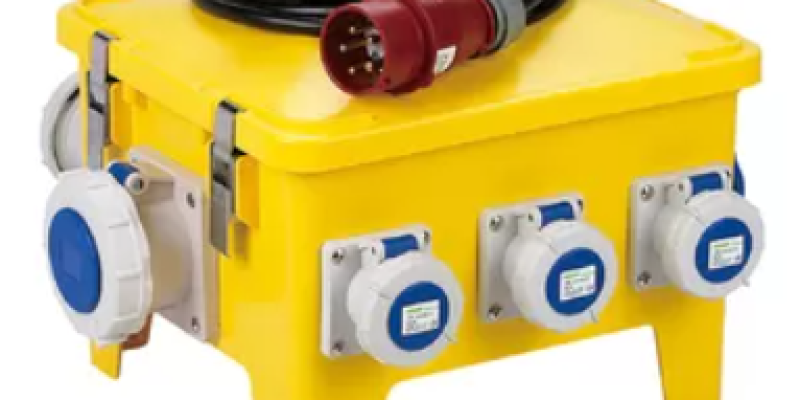

For event crews and field technicians who juggle sound rigs lighting and temporary power demands a Portable Distribution Box is a practical way to organize feeds and reduce risk. Knowing how wattage relates to circuits helps crews avoid overloads that trip breakers or stress generators. With outdoor gatherings and mobile work sites back in focus, a little planning around load distribution keeps shows and shifts running without surprise outages.
Start by thinking in terms of whole circuits rather than individual plugs. Every outlet on a case shares a common feed and a limit set by protective devices. Grouping high draw items together can push that feed toward its limit so spread motors heaters and stringed lighting across separate circuits whenever possible. Label each output clearly and keep a simple map taped inside the lid so visiting technicians can see which outlets serve which loads.
Stagger equipment start up to avoid large inrush currents hitting a single supply at once. Fans and motors often draw more when they start than during steady running and starting many devices simultaneously can overwhelm protective gear. A short delay between powering large items or using soft start options reduces the peak strain on the distribution system and limits nuisance trips that interrupt workflow.
Know the practical limits of portable generators and onsite supplies. Temporary power sources tolerate a steady draw up to their designed capacity and frequent peaks shorten their effective life. Where possible split heavy loads across separate supplies or arrange for a dedicated feed for motorized equipment. If Portable Distribution Boxs will feed both sensitive electronics and heavy gear, isolate those lines so a motor start does not create voltage dips that upset control equipment.
Keep connectors tidy and mechanical strain relaxed. Cables that pull at terminals or that bend sharply raise resistance at connection points and that resistance becomes heat under load. Use proper strain reliefs and route runs so any tug transfers to a clamp or bracket rather than to a terminal screw. Check that finger tight fasteners are torqued to supplier notes and swap worn glands that no longer seal or secure cables.
Protective devices on the box deserve a short pre use check. Confirm that ground fault protection and local breakers operate and that indicators read as expected. Periodic testing prevents surprises and helps crews identify a marginal device before it fails under live load. If a unit will see repeated use in wet or outdoor environments choose an enclosure and protective components rated for the conditions so environmental stress does not mask an electrical problem.
Training and simple documentation pay off. A brief site orientation that covers how to read the distribution map where to plug certain types of gear and what to do if a breaker trips reduces guesswork when a crew changes mid shift. Attach a laminated quick guide to the case lid and include a checklist for pre show or pre shift routines that technicians follow consistently.
For larger events or longer deployments consider monitoring. Basic metering modules give instant view of aggregate load and let managers shift non essential items quickly when a feed approaches its limit. A monitored Portable Distribution Box also helps plan generator refueling and lets operations smooth consumption over a longer window rather than reacting to repeated trips.
When choosing or specifying a unit prioritize serviceability. Cases that accept modular outlets and that offer clear spare lists let field teams replace a worn component without sending the whole box for repair. Consistent layout across a fleet speeds training and reduces the chance that a visiting technician will misplace a high draw device onto an overloaded circuit.
Avoiding overloads is less about exact calculations and more about practical habits: spread loads label circuits stagger startups and keep connectors relaxed and protected. With thoughtful use a Portable Distribution Box becomes a reliable partner for short term power rather than a source of last minute headaches.
For product choices mounting options and accessory packs that support safe portable distribution and sensible monitoring visit https://www.nante.com/ . The site presents models and accessory notes that help planners match a unit to event workflows and field realities while supporting reliable temporary supply.